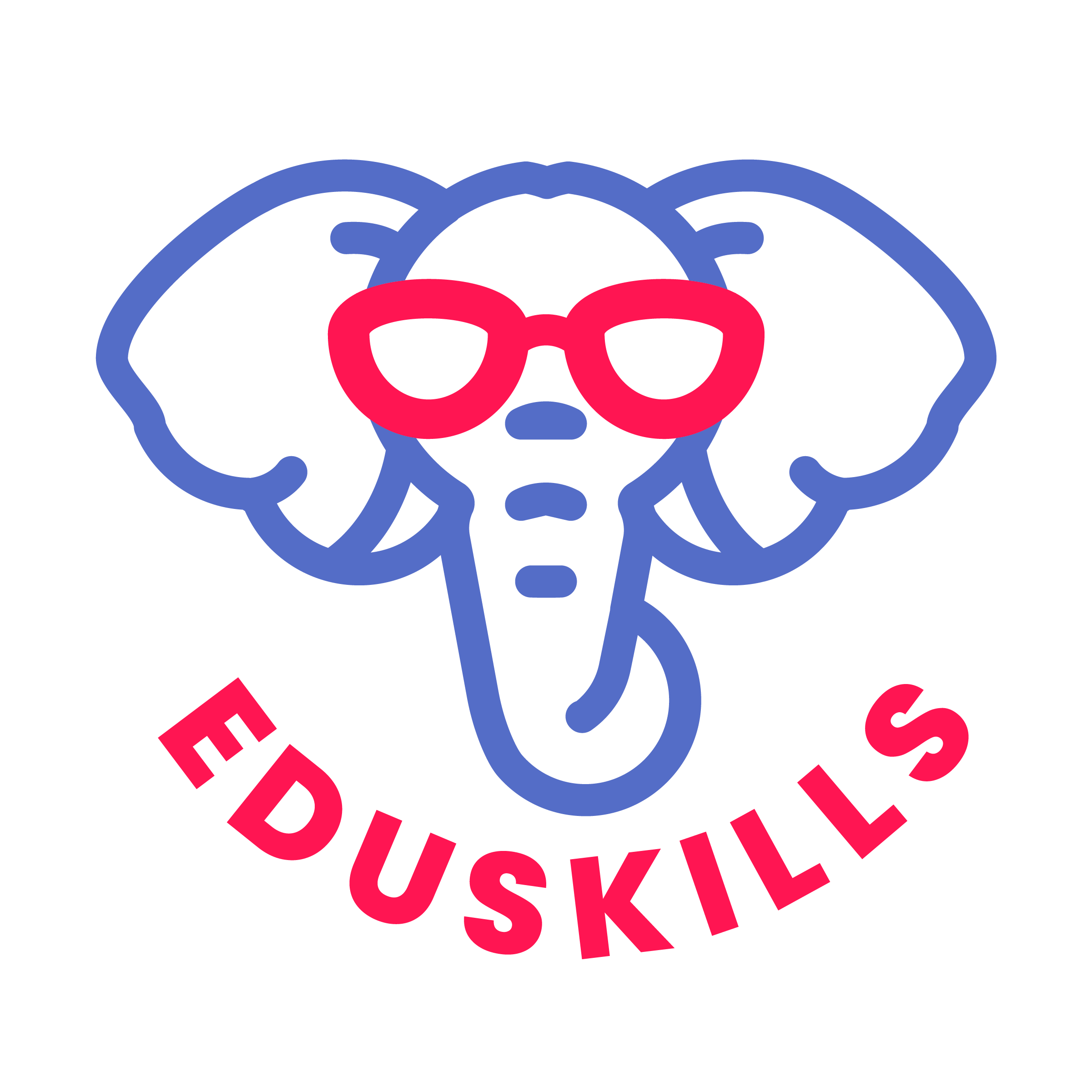Data – The Elephant in the Room
In my second year of teaching, amidst a huge shift in the population of our school district’s multilingual students because of an influx of newcomer students, when I felt like I was struggling to keep my head above water to support these new and amazing students every day, I knew I had to add to my instructional toolbox.
These students brought incredible assets and experiences that added to our school and classroom culture. However, traditional assessments showed gaps in their comprehension, yet I knew they didn’t tell the full story. I knew we needed more information, but it was hard to figure out what exactly we needed to support them. We started tracking a few key data points: language proficiency, attendance, engagement in the classroom, and formative assessment results. This data helped us to tailor instruction to students’ needs—using visuals, sentence frames, small group activities, and intentional communication with families in their home languages — and we started to see some remarkable progress. By figuring out some patterns within the data, we were able to support them better throughout their day with strategies and by making input comprehensible no matter where they were in the school.
Now, let’s address the elephant in the room: data. Yes, data in education is a well-beaten drum. It seems if education over the last few years had a theme song, “Dancing with Data” would be on the top of every playlist. And while many of us are almost sick of hearing about it, we also know deep down (maybe grudgingly) that it works when done meaningfully. It’s not just numbers on a spreadsheet; it’s the key to unlocking multilingual student success.
So, how can we use data without drowning in it? Here are four essential data points that can help educators make informed decisions to foster multilingual learner growth and success—without losing our sanity.
Language Proficiency Levels
Why It Matters
Language proficiency levels provide a critical foundation for understanding how students interact with and process information in a second language. Without this context, educators might unknowingly assign tasks that are either too easy or too challenging, leading to frustration or disengagement. For multilingual learners, progress in language acquisition doesn’t happen evenly across the four domains—listening, speaking, reading, and writing. Each domain develops at its own pace, influenced by factors such as a student’s background, previous exposure to the language, and the level of support provided in the classroom.
By understanding where students are in their language journey, teachers can create a classroom environment that meets them where they are and scaffolds them toward greater independence.
What to Track
Results from standardized assessments like WIDA ACCESS for ELLs or state-specific language proficiency tests provide valuable benchmarks. Additionally, informal formative assessments such as classroom observations and language samples can add to the picture the yearly standardized assessments provide.
How to Use the Data
Language acquisition follows a predictable process. Students typically develop receptive skills—listening and reading—before they become proficient in productive skills like speaking and writing. For example, a multilingual learner might understand classroom instructions (listening) and comprehend simple texts (reading) before feeling confident enough to write a paragraph or participate in a group discussion. Making results from these assessments meaningful and accessible to educators is a crucial step for implementation in the classroom.
Tailor instruction to meet students’ needs at their specific stage. For instance, a beginner in speaking might benefit from sentence frames, while a more advanced student could use graphic organizers to structure their thoughts. A middle school teacher once modified a group project by offering translated instructions and assigning multilingual peers as collaborative partners—resulting in higher participation and confidence.
Attendance
Why It Matters
We know from tons of research and anecdotal evidence that attendance matters. For multilingual learners, it’s often a key indicator of student well-being and access to learning opportunities. Attendance issues can stem from various factors: adjusting to a new culture, navigating transportation challenges, or even feeling disconnected from the classroom environment.
Missing school doesn’t just affect a student’s academic progress; it can also disrupt their ability to build relationships, participate in language-rich activities, and develop a sense of belonging. Addressing attendance patterns proactively can help prevent larger issues like chronic absenteeism, which research shows disproportionately affects multilingual learners.
What to Track
Monitor patterns of absences, tardiness, and early departures. Pay attention to whether absences cluster around certain days, subjects, or seasons. Tracking this data can reveal hidden barriers that might otherwise go unnoticed.
How to Use the Data
During the time that many newcomer students were arriving and trying to get accustomed to American school culture, I noticed that many students seemed to be dealing with attendance issues. After I started looking into it, I realized that the students we were noticing this with were all on the same bus route and were missing their bus. After a home visit and a model bus ride, the families felt more comfortable and knew the exact time and place they needed to be and poof, the attendance issues were virtually gone.
Similarly, if data reveals consistent absences, educators can use multilingual communication tools like to build trust and open dialogue with families. Sometimes, simple solutions—such as providing translated school newsletters or offering bus route information in multiple languages—can make a significant difference.
Attendance isn’t just about getting students in the door; it’s about ensuring they feel welcomed, supported, and ready to learn once they’re there.
Student Engagement
Why It Matters
Engagement isn’t just about who’s raising their hand; it’s about how deeply students are connecting with the material, their peers, and their learning environment. For multilingual learners, engagement is often tied to factors like cultural relevance, comprehension and strategies that increase it, and feeling valued as members of the classroom community.
When students disengage, it’s not always obvious. A student might quietly avoid participating in discussions or rush through assignments, signaling a deeper issue. Tracking engagement provides educators with the opportunity to adjust instruction, making lessons more inclusive and accessible. Engagement isn’t just a nice-to-have; it’s a critical bridge between understanding and meaningful learning.
What to Track
Keep an eye on participation rates in class discussions, group activities, and independent work. Notice trends over time—does the student regularly contribute in certain settings but stay silent in others? Use observations, peer feedback, and even quick student surveys to gather insights.
How to Use the Data
Last year I worked with an 8th grade teacher who was worried about one of his students. A multilingual learner in 8th grade, he rarely spoke during group discussions and avoided eye contact when called on. His teacher noticed this pattern and began tracking his participation during different activities. She realized Mateo was more engaged during hands-on projects where he could collaborate non-verbally and express his ideas through visuals.
To support him, Ms. Carter incorporated more project-based learning, utilized sentence stems, and added peer-pairing strategies that gave him opportunities to build confidence in smaller settings. Over time, this student began contributing more, both verbally and through written reflections. His confidence slowly increased, and his classmates started recognizing him as a leader during group tasks.
Engagement data can guide teachers toward routines that can increase engagement, culturally responsive teaching, or providing alternative ways for students to demonstrate understanding. Small adjustments can make a big difference in creating an inclusive environment where all learners, especially multilingual ones, feel empowered to participate.
Formative Assessment Data
Why It Matters
Formative assessments offer quick, low-stakes feedback that helps educators gauge student understanding and adjust instruction in real-time. These assessments allow teachers to respond promptly to students’ needs, ensuring that learning stays on track.
What to Track
Track a variety of assessments to gain a comprehensive view of student progress:
- Quizzes: Short, focused checks for understanding.
- Structured conversations: Intentional discussions that focus on specific learning goals, allowing students to verbalize their understanding by using sentence stems and peer-to-peer authentic interactions.
- Exit tickets: Quick reflections or questions at the end of a lesson to gauge immediate comprehension.
- Reflective journals: Personal reflections that help students articulate their thinking.
- Writing samples: Provide insight into students’ ability to communicate ideas clearly and effectively.
These tools give valuable insights into both areas where students excel and where they may need more support.
How to Use the Data
Once collected, use the data to inform and adjust lessons to meet students’ needs. For instance, if a group of multilingual learners struggles with a specific science concept, consider using a variety of teaching methods, such as incorporating videos, visual aids, or hands-on experiments, to reinforce the material. Your exit ticket can be short but intentional structured conversation with a sentence stem as an exit ticket. Even small shifts in instructional delivery can lead to substantial improvements in student understanding and engagement.
More “aha” moments to come…
Tracking these data points—language proficiency, attendance, engagement, and formative assessment—gives educators a well-rounded picture of multilingual learner progress. Think of it like piecing together a puzzle. Each piece (whether it’s a quiz score, an exit ticket, or a structured conversation) provides a crucial snapshot of where your students are in their learning journey. Without one of those pieces, you’re left with an incomplete picture, and let’s face it, who wants a puzzle with missing pieces?
Consider it this way: Imagine you’re a detective, but instead of solving crimes, you’re solving the mystery of how best to support your students. You have clues everywhere—an exit ticket reveals a “whoops, didn’t get it” moment, while a quiz might highlight a “wow, they totally nailed it” moment. These data points guide you to the next steps, like a treasure map to better teaching strategies.
By tracking these key metrics, you’re not just getting numbers on a page. You’re gathering stories about your students—stories of struggle, growth, and those sweet “aha!” moments. And ultimately, it’s these stories that will help you adjust your teaching approach to meet each learner where they are. So, go ahead, track away! The more data you gather, the more tools you have to help your students thrive. After all, every successful educator knows it’s not just about teaching content—it’s about teaching students.
Interested in taking a deeper dive into data-driven strategies for multilingual learners? Explore how EduSkills can help you transform data into growth and success! [Link to EduSkills Services]




